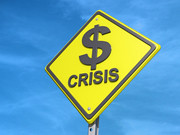Dollar Crisis by One Way Stock
Inequality for All
Directed by Jacob Kornbluth
Narrated by Robert Reich
Another persona is Reich himself benignly and
reassuringly addressing viewers. Then there are a few "suspension bridge"
graphs (of the economy and distribution of wealth in 1928 and 2007) and other witty
illustrations and animation.
In college I
took econ 101 to dispense with a distribution requirement and only began to
realize its importance as well as enigmas, after becoming a progressive and
running into so many experts. As a result of this and ingestion of so many
excellent prog websites, OEN not the least among them, I learned very little
from the film and recommend it heartily to those in need of it, wherever they
are--the Tea Party in particular.
One of the main
points is that the four hundred richest people (the "job creators"), who hold
as much wealth as the entire poorer half of the rest of the U.S. population,
would fare far better if the middle class wasn't tanking so badly, we whose
spending comprises 70 percent of the economy. [Remember how well Karl Rove
fared during the Clinton administration as head of Halliburton.] The looming
threat of baby boomers aging into social security collectors (we've earned it!)
is also foreseen as a burden the economy will have to struggle with.
There is the
token presence of a few one percenters, Seattle-based venture capitalist Nick
Hanauer in particular, whose view is that "the most pro-business thing you can
do is to help middle-class people thrive." His federal income tax is only
11 percent of his seven-figure salary, which he thinks is unfair.
The American
dream has become exactly that, a ghost of the past--the fifties through the
seventies when the middle class thrived in all of its dimensions. We have the
highest degree of income inequality of all wealthy nations in the world--"so
there, Ivory Coast and Yemen," or some words to that effect, injects a cameo of
Jon Stewart, referring to countries that immediately follow America's dismal
position on a relevant list. Forty-two percent of Americans born into poverty
will never make it out, as opposed to 30 percent of Britons and 25 percent of
Danes.
Reich
criticizes his former boss Bill Clinton's revoking of the Glass-Steagel act and
deregulation of derivatives, as seeds of the great recession nurtured by the
two Bush II administrations that followed. If the world economy doesn't tank as
a result of our [justifiably] benighted Congress's decision to allow defaulting
on the national debt, the feudalistic greed of the "top four hundred,"
attempting to devour the country like hot lava, will rock the foundations of
democracy. I do believe this has been said before with a great deal more
emotionality.
As I wrote
above, most of the film is old news out of the mouth of an amiable icon revered
by many. Productivity has never been higher in this country, he emotes, and yet
workers' salaries, adjusted for inflation, are lower than they were thirty
years ago. The cameo of a haggard, struggling member of the victim class, most
lately suffering from a blunt cut into her pathetic wages by her corporate
bosses, is most effective, as are brief glimpses of Occupy and Tea Party
rallies, implicitly paralleled for having arisen out of the same shameless
eruption of the basest extremes of human nature.
"Except for
styles in facial hair, it can be hard to tell the groups apart," writes film
critic Kenneth Turan, whose take on the film in the Los Angeles Times is far
more positive than the Gray Lady's.
(Note: You can view every article as one long page if you sign up as an Advocate Member, or higher).






